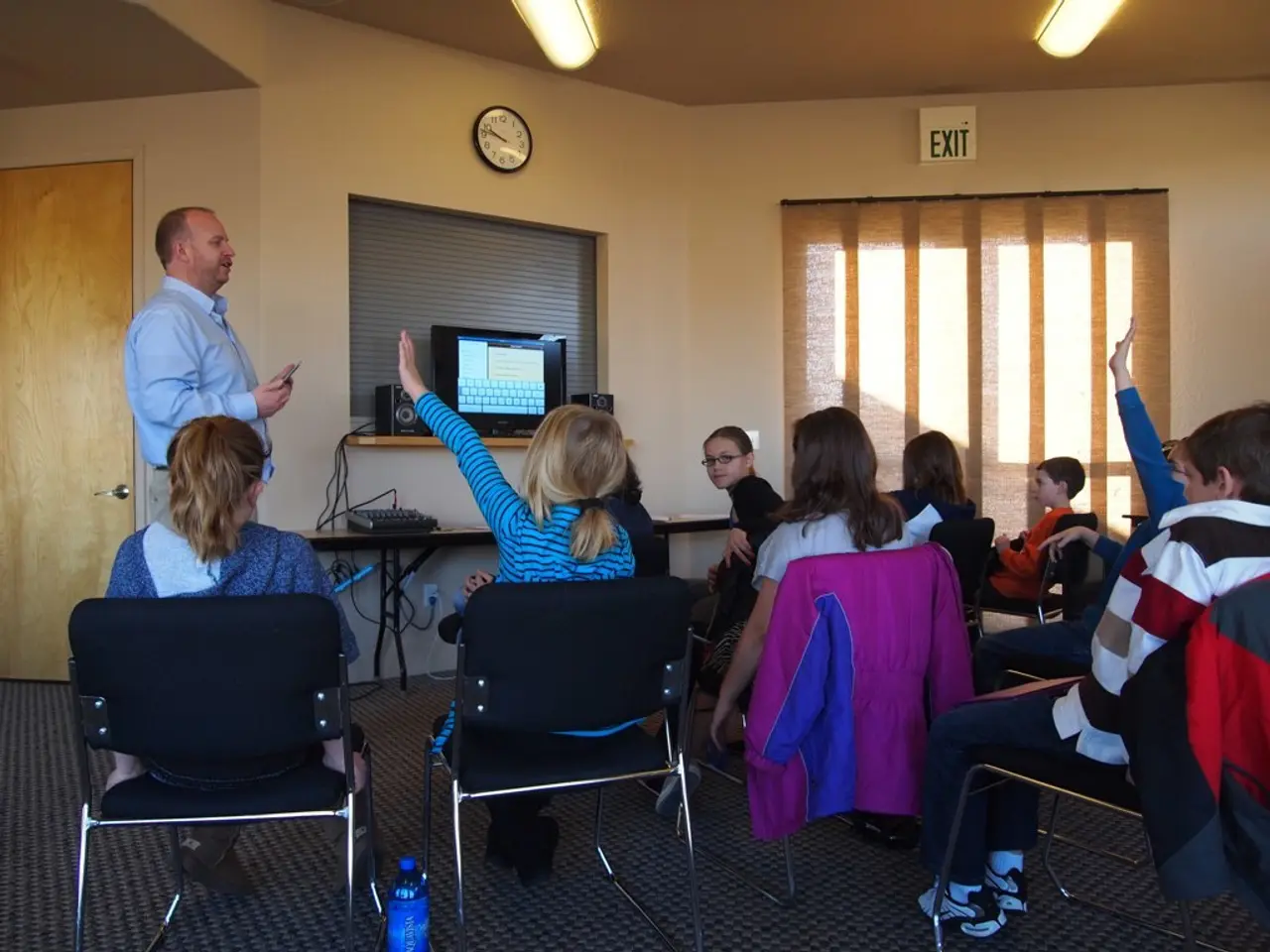Examining the Utilization of Virtual Reality in Modern Education
Virtual Reality (VR) is revolutionizing the educational landscape, offering a transformative learning experience that prepares students for future challenges and enhances academic success. Universities like Case Western Reserve University are already employing VR to facilitate anatomy lessons, allowing students to interact with 3D holograms of the human body.
Programs such as Unity provide educators with the ability to design customized VR content tailored to specific educational needs. This educational flexibility and accessibility are evident in institutions like Hibernia College and Ludwigsburg University, which are incorporating VR to facilitate virtual mobility and flexible learning, broadening accessibility and offering global educational experiences without physical travel.
Recent studies indicate that VR positively impacts student engagement, knowledge retention, and learning outcomes, particularly in immersive and hands-on learning contexts. VR enhances comprehension and performance in subjects requiring spatial understanding and practical skills, although benefits may vary for short-term retention.
Engagement is a key area where VR excels. By providing fully immersive learning experiences, VR enables interactive, hands-on learning environments beyond traditional methods. Research shows VR may improve long-term retention of information, although some studies report no significant advantage over traditional approaches for short-term retention. VR's immersive nature facilitates better memory encoding, which supports sustained knowledge retention.
In the realm of engineering and education, studies demonstrate that VR enhances students’ comprehension and practical skills, sometimes outperforming conventional teaching techniques in procedural learning and knowledge application. VR's integration into educational software is seen as a promising development for expanding its effectiveness.
The California Academy of Sciences utilizes VR to transport K-12 students to underwater ecosystems, fostering environmental awareness. Virtual reality applications also allow for the integration of student interests into learning paths, fostering a sense of autonomy and encouraging deeper exploration of topics.
Mobile VR options, using smartphones and inexpensive headsets, are accessible alternatives that can reach wider audiences. Through proper training and professional development, teachers can acquire the necessary skills to leverage virtual reality applications effectively.
The potential for collaboration and social interaction within virtual environments is increasing, allowing students to work together in a shared virtual space. The landscape of VR applications in education is evolving rapidly, with enhancements in VR headsets, improved software platforms, and the integration of artificial intelligence.
Software platforms like Google Expeditions and ClassVR facilitate virtual field trips, bringing global destinations directly into the classroom. Head-mounted displays (HMDs) like the Oculus Rift and HTC Vive offer students an engaging way to interact with complex subjects.
Incorporating artificial intelligence into VR applications enhances the adaptability of educational content, personalizing the learning experience for each student. The University of Illinois College of Medicine, for instance, integrates VR simulations for medical training, enabling students to perform virtual surgeries.
Students utilizing virtual reality systems demonstrate improved critical thinking and problem-solving skills. Recent advancements in virtual reality technology have significantly transformed its applications in education, with innovations in hardware and software.
Educators play a pivotal role in integrating virtual reality applications in education, acting as facilitators who guide students through immersive experiences. Collaboration among educators is vital for successful integration, as they share best practices and resources to maximize the potential of virtual reality applications.
These studies collectively suggest that VR is a valuable educational tool, especially for enhancing engagement and long-term learning in disciplines benefiting from experiential and spatial learning. Ongoing research continues to refine its application and measure comparative advantages over traditional methods.
- Embracing virtual reality (VR) as a part of professional development can help educators design customized e-learning content that fosters teamwork skills, personal growth, career development, and education-and-self-development.
- The integration of VR technology into engineering and education can significantly enhance students' understanding of subjects requiring spatial understanding and practical skills, promoting deeper learning and performance.
- To maximize the potential of VR applications in education, collaboration among educators is essential for exchanging best practices and resources, ensuring a successful implementation of VR in the educational landscape.
- With advancements in virtual reality technology, educators can leverage VR to create more engaging, interactive, and hands-on learning experiences, leading to improved critical thinking, problem-solving skills, and long-term learning outcomes.




